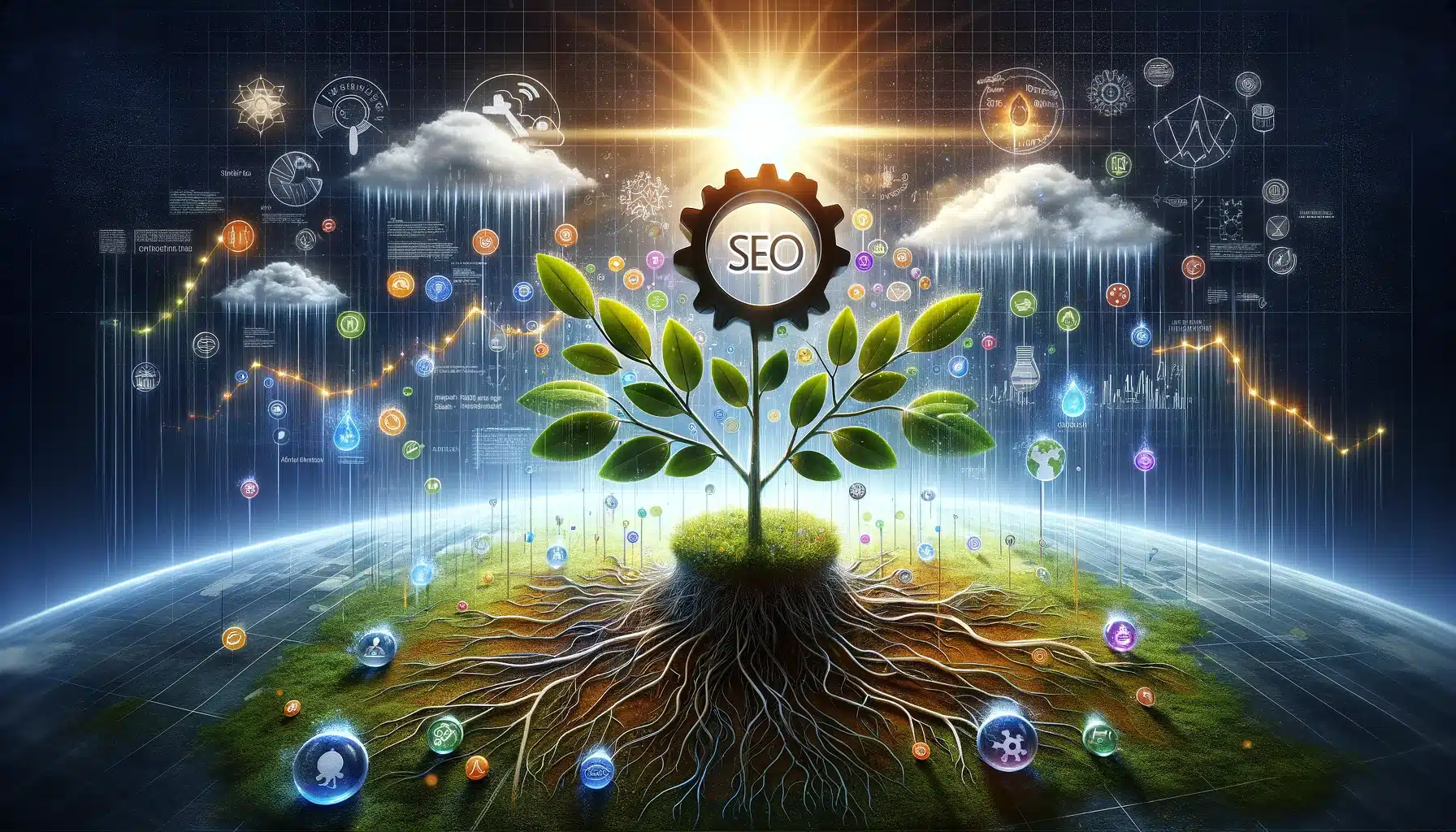Content marketing has swept the business world, transforming how companies interact with their audiences. At its essence, content marketing focuses on creating and sharing valuable, relevant, and consistent content to attract and engage a clearly defined audience.
The key objective is often to drive profitable customer action.
But it’s not just about randomly pumping out articles, videos, and social media posts. It’s about building a strategic foundation to ensure that every piece of content aligns with business goals and audience needs.
Before discussing each component of the foundation of content marketing, let’s appreciate the meticulous planning and execution involved.
A successful content marketing strategy requires an understanding of your target audience, a grasp of content creation and distribution, and the measurement of content’s impact on your audience.
It’s both a science and an art, requiring creativity, analytics, and continuous adjustment.
Target audience importance in Content Marketing
Knowing your audience is the most important part of every marketing plan.
Trust me, if you don’t know who your audience is, how do you communicate with them?
Should you speak in English or German?
Do they really want to communicate with you?
What are their interest?
It is a little bit challenging to find the best target audience. But by answering these questions, you can easily create the first draft of your target audience:
- Who is your ideal customer, and what are their key characteristics (age, gender, income level, education, etc.)?
- What specific needs or problems does your product or service address for your target audience?
- Where does your target audience spend most of their time online (social media platforms, forums, websites)?
- What are your target audience’s hobbies, interests, and lifestyle preferences?
- How does your target audience prefer to receive information (videos, articles, podcasts, etc.)?
- What are your target audience’s common objections or concerns about your product or service?
- What language, tone, and messaging styles most effectively engage your target audience?
With these personas in hand, you’ll be better able to determine the most effective content.
For instance, if your persona is a busy professional with limited time for reading, short, informative blogs or podcasts might be more appropriate than long-form content.
However, understanding your audience is not enough; you must also listen to them. Social media platforms and online forums are gold mines for gleaning insights into what your audience is talking about.
Engaging with your audience through these channels can provide a feedback loop, which you can use to refine your content strategy and ensure that your message remains relevant.
Last but not least, audience understanding directly influences conversion rates. Engagement and conversion are the byproducts of effective audience-centric content marketing.
Creating Content That Resonates

High-quality content is written for your audience and engages them with your website!
But what defines quality? It often translates to accuracy, usefulness, relevance, and entertainment. Aim to educate, inspire, and engage; you have a winning formula.
Do not underestimate the importance of storytelling. Regardless of your content’s format—blog post, video, infographic, or podcast—a narrative can make your message stick.
Stories help your audience connect with your content emotionally, making it more memorable and impactful. And when paired with solid data and proven facts, your content becomes even more compelling.
Apart from storytelling, your content’s format and presentation also play vital roles in its success. Visual content often performs well because it is easy to consume and share. Infographics, videos, and high-quality images can convey your message more effectively than text alone.
In contrast, long-form articles and white papers can establish your brand’s authority and showcase in-depth knowledge.
Balance is key: Diverse content types will cater to different preferences and stages of the buyer’s journey.
Consistency is another critical factor in creating content that resonates. Consistent voice, style, and quality across all your content marketing efforts help build brand recognition and trust. Whether through a witty tone in blog posts or a specific color scheme in visuals, a consistent element should define your brand’s content.
When discussing content resonance, search engine optimization (SEO) cannot be ignored. The judicious use of targeted keywords and phrases will ensure that your content is found by the right people at the right time.
However, balance is also essential here; never sacrifice the readability and quality of your content for the sake of SEO.
The goal is to create content that ranks well and thoroughly engages the reader.
It’s also essential to ensure your content is accessible to everyone. Use plain language, provide subtitles for videos, and make your website navigable for people with disabilities.
By doing so, you broaden your audience and demonstrate an inclusive approach to content marketing.
Strategic Distribution and Promotion

Creating outstanding content is only half the battle. Even the most engaging piece is useless if it doesn’t reach your target audience.
That’s where strategic distribution and promotion come into play. Identify the channels—social media, email newsletters, or industry publications—that offer the most direct path to your audience. Then, craft a distribution plan to ensure your content gains maximum visibility.
Not all channels will be suitable for every piece of content or every audience. Conduct tests and analyze the performance of different platforms to see where your content is most appreciated and engaged.
This goes beyond traditional analytics; look at sharing, commenting, and conversion metrics to understand how deeply your content resonates with audiences.
With social media’s rise, influencers and brand ambassadors have become invaluable allies in content distribution. Working with individuals who already have the ear of your target market can amplify your content’s reach and credibility.
But remember, the influencers you collaborate with should be aligned with your brand values and audience needs.
Content promotion also extends to paid advertising. Platforms like Meta, Google ads and Taboola offer advanced targeting options, so pay-per-click campaigns can effectively drive traffic to your content.
However, the ROI of these campaigns should be monitored closely. The ultimate goal is to attract organic traffic that will be sustained over time and lead to a loyal following.
Repurposing existing content can give it a new lease of life and attract different segments of your audience.
For example, converting a blog post into a video or an infographic can help reach audiences that prefer visual content. Thus, a strategic repurposing plan will save resources and enhance content engagement across different mediums.
Lastly, community building and networking can do wonders for content distribution. Engage with your audience and fellow industry professionals on social platforms and in real life. Share others’ content, and they may share yours, fostering an environment of support that helps propagate your content further than you might achieve alone.
Measurement and Analysis for Continuous Improvement

As with any marketing initiative, measurement and analysis are foundational to content marketing. Setting clear, measurable goals lets you determine whether your efforts are paying off.
Whether these goals relate to website traffic, lead generation, or social media engagement, having specific metrics to track progress against is vital.
Data gathered through analytics tools should guide your content marketing strategy. It is important to understand how much traffic a piece of content drives and how visitors interact.
Are they staying on the page or bouncing off immediately?
Are they taking the next steps toward conversion, like signing up for a newsletter or following a call to action?
One critical metric often overlooked is the engagement that content receives. It’s not solely about volume, like page views or unique visitors, but more importantly about the depth of interaction. Comments, shares, and time spent on a page can indicate that your content is striking a chord with your readers.
Analysis should also extend beyond quantitative data to include qualitative feedback. Customer surveys, feedback forms, and social media comments can provide insights into what your audience truly values in your content.
Keep in mind that the digital landscape is always shifting.
What works today might not work tomorrow. Therefore, experimenting with new content types, distribution channels, and promotional strategies.
Let data drive your decisions, but don’t be afraid to test new waters based on educated hunches.
A/B testing is a technique that can reveal a great deal about content preferences. By presenting two versions of a piece of content to different audience segments, you can learn which elements—like headlines, images, or the overall format—are most effective.
This continuous cycle of testing, measuring, and refining is the heartbeat of a content marketing strategy that survives and thrives.
The Importance of SEO in Content Marketing

SEO is a critical component of any content marketing strategy. It enhances your content’s visibility on search engines, making it easier for your audience to find you.
Understanding how search algorithms work is important in tailoring your content marketing strategy to fit those parameters.
Mobile-friendliness, page loading speed, and secure domains are increasingly critical in SEO. Your content must be accessible and perform well across all devices, especially since mobile search is continuously growing.
Building links within your content also plays a crucial role in SEO.
External links to reputable sources can add credibility to your content, and internal linking can keep readers on your site for longer periods, which search engines favor. However, links should be natural and valuable; forcing them into content where they don’t belong can harm your SEO efforts.
Metadata, such as title tags and meta descriptions, are small but mighty elements of SEO. These pieces of information help search engines understand your content and give searchers insight into what they can expect to find if they click through to your website.
Thus, they are an important factor in your click-through rates and search rankings.
Regular updates and fresh content tell search engines that your site is active and relevant. This doesn’t mean you must constantly produce new content; updating existing pieces with new information or insights can be just as effective.
Plus, it helps keep your site current for return visitors and those who come across your content via search engines.
Lastly, SEO should not be an afterthought—it should be integrated into the content creation process.
This means researching and understanding which keywords to target before developing the content and creating content around those keywords.
However, the readability and user experience should never be compromised for the sake of SEO.
Leveraging Technology to Enhance Content Marketing
Technology plays an increasingly significant role in all aspects of content marketing.
From content management systems (CMS) that streamline content creation and distribution to analytics tools that track engagement and performance, technology can help content marketers work smarter, not harder.
Artificial intelligence (AI) and machine learning are transforming content marketing. AI can analyze data and user behavior to predict what content will perform best.
It can also help personalize content for individual users, making it more relevant and engaging. Machine learning algorithms can improve search functionality on your site, leading to better user experiences.
Automation tools are also invaluable in content marketing, especially in social media management and email marketing.
These tools save valuable time by scheduling posts and emails ahead of time and can also provide insights into the best times to post for optimal engagement.
Collaboration platforms facilitate content marketing by allowing teams to collaborate seamlessly, regardless of location. With features like document sharing, real-time editing, and communication channels, these platforms make it easier to keep everyone on the same page and content production flowing smoothly.
Interactive content is another technology trend that is gaining traction in content marketing. Quizzes, polls, and interactive infographics can engage users more deeply than static content.
They provide a fun experience for the user and offer a wealth of data on user preferences and behaviors for the marketer.
Lastly, technology is also your ally in content marketing measurement and analysis. Many analytics tools are available so you can delve deep into your content performance and make data-driven decisions to enhance your strategy.
Investing in the right tools can mean distinguishing between a successful and a failed campaign.
Future Trends in Content Marketing

The world of content marketing is always evolving, and staying ahead of the curve is vital. Interactive and personalized content is becoming more commonplace as marketers strive to create more engaging user experiences.
The focus is shifting towards attracting users and providing them with value that keeps them returning for more.
Video content has been trending for a while, and its growth shows no sign of slowing down.
Live streaming, storytelling through video series, and user-generated content are all becoming critical in capturing and maintaining audience interest. Video’s immersive experience and shareability make it a powerful tool in a marketer’s arsenal.
Content marketing is also being integrated more tightly with other digital marketing strategies, such as search engine marketing, social media, and influencer marketing. This integration ensures a unified approach to the customer journey, creating a seamless experience from the first point of contact to conversion and beyond.
Voice search optimization is another trend to watch. With the rise of virtual assistants and smart speakers, optimizing content for voice search is becoming increasingly important.
Focusing on conversational keywords and questions and creating snippet-friendly content that can be featured in voice search results.
Lastly, the role of ethics in content marketing is gaining attention. Consumers are more aware and concerned about privacy and how their data is used. Transparent and ethical content marketing practices will be imperative for building trust with your audience and maintaining a positive brand reputation.
Keeping up with these trends will require adaptability and a willingness to embrace new techniques and technologies.
By keeping your finger on the pulse of the latest developments in content marketing, you can ensure that your strategy remains effective and relevant in the ever-changing digital landscape.
Get help from experts!
Creating a content plan can be tough, especially if your team is small.
ContentGo offers a solution with access to over 4,000 native writers, streamlining your content creation process. And if you’re keen on AI-generated content, we’ve got your back!
ContentGo AI allows you to generate content swiftly. Our editors are on standby to refine your drafts, ensuring they’re ready for publication.
Just email soner@contentgo.ai or sign up to start!











